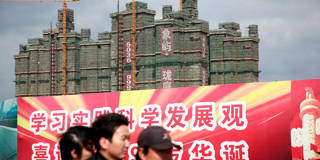Even if China maintains its market-oriented reform momentum, tensions with the West are unlikely to be resolved quickly. While steps can be taken to reduce these tensions, they cannot be easily eliminated, which means that they will probably be a key factor shaping the future of China’s development model.
MILAN – China’s strategy for economic growth has been a work in progress since Deng Xiaoping launched the country’s “reform and opening up” in 1978. While the last 40 years of reform have been far from error-free, the government has displayed a willingness to adapt, as well as a capacity for navigating complex transitions, supported by a healthy internal policy debate. But how is China’s development model likely to evolve in the future, as external conditions pose new challenges to economic growth?

MILAN – China’s strategy for economic growth has been a work in progress since Deng Xiaoping launched the country’s “reform and opening up” in 1978. While the last 40 years of reform have been far from error-free, the government has displayed a willingness to adapt, as well as a capacity for navigating complex transitions, supported by a healthy internal policy debate. But how is China’s development model likely to evolve in the future, as external conditions pose new challenges to economic growth?